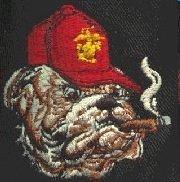The real culture of violence in the American West of the latter half of the nineteenth century sprang from the U.S. government's policies toward the Plains Indians. It is untrue that white European settlers were always at war with Indians, as popular folklore contends.
After all, Indians assisted the Pilgrims and celebrated the first Thanksgiving with them; John Smith married Pocahontas; a white man (mostly Scots, with some Cherokee), John Ross, was the chief of the Cherokees of Tennessee and North Carolina; and there was always a great deal of trade with Indians, as opposed to violence. As Jennifer Roback has written, “Europeans generally acknowledged that the Indians retained possessory rights to their lands.
More important, the English recognized the advantage of being on friendly terms with the Indians. Trade with the Indians, especially the fur trade, was profitable. War was costly” (1992, 9). Trade and cooperation with the Indians were much more common than conflict and violence during the first half of the nineteenth century.
Terry Anderson and Fred McChesney relate how Thomas Jefferson found that during his time negotiation was the Europeans' predominant means of acquiring land from Indians (1994, 56). By the twentieth century, some $800 million had been paid for Indian lands.
These authors also argue that various factors can alter the incentives for trade, as opposed to waging a war of conquest as a means of acquiring land. One of the most important factors is the existence of a standing army, as opposed to militias, which were used in the American West prior to the War Between the States.
On this point, Anderson and McChesney quote Adam Smith, who wrote that “‘[i]n a militia, the character of the labourer, artificer, or tradesman, predominates over that of the soldier: in a standing army, that of the soldier predominates over every other character.'” (1994, 52).
A standing army, according to Anderson and McChesney, “creates a class of professional soldiers whose personal welfare increases with warfare, even if fighting is a negative-sum act for the population as a whole” (52).
CONTINUES...
http://www.lewrockwell.com/dilorenzo/dilorenzo195.html
*****
**********
Hey, See the Reader Responses on each article,
they are gems in themselves!
**********

**********
Gunny G: BLOGGER 1984 +
http://gunnyg.blogspot.com
and...
http://gunnyg.wordpress.com/
**********

**********
**********




No comments:
Post a Comment
Note:
The 'Reader Responses; shown on many posts/articles are almost always worthwhile reading.
Often, the comments by readers enhance the posted article greatly, and are informative and interesting.
Hopefully, all will remember to read the reader comments, and post their own as well.
Thanx
*****